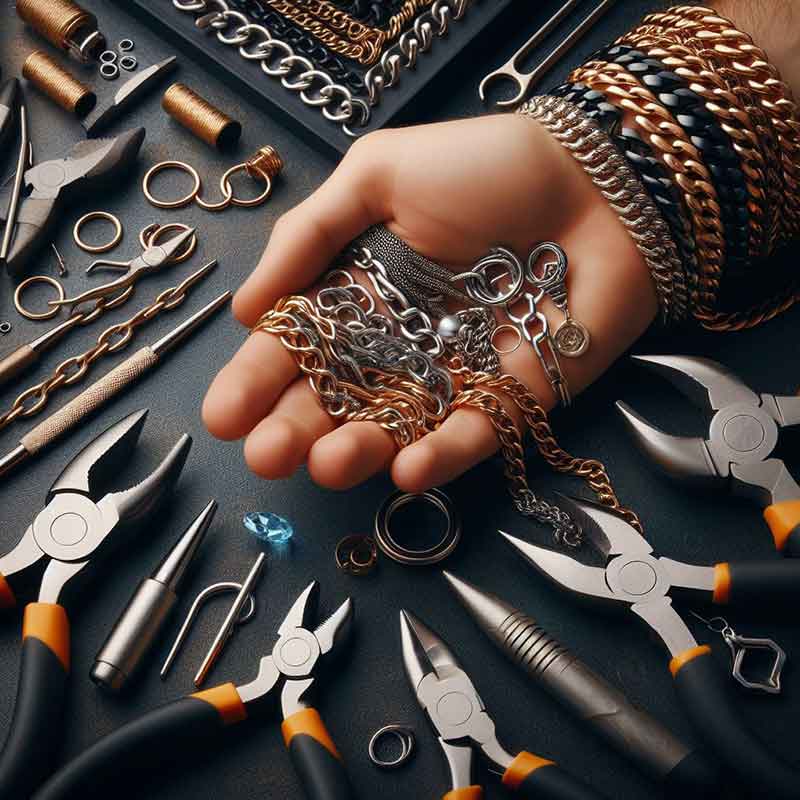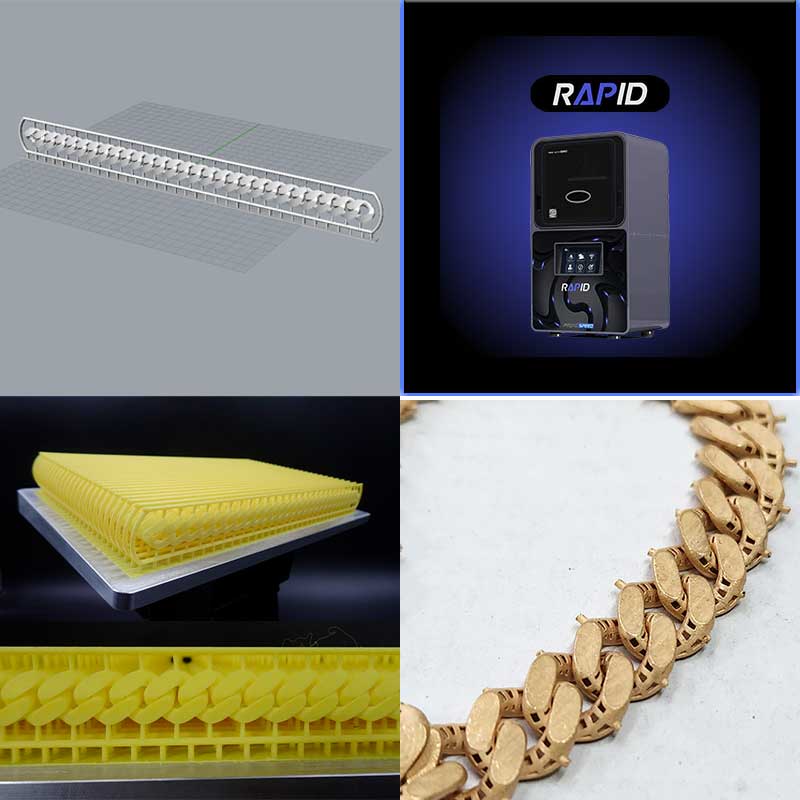Guide to 3D Printing Cuban Chains
How Cuban Link chains were traditionally made?

Cuban Link Chains are traditionally manufactured by manual techniques. They are composed of gold or silver primarily. Tools like rolling mills, drawplates, mandrels, pliers, and torches, are use in the manual manufacturing process.
Material Selection:
At very first the materials are selected. Cuban Chains are generally made of Gold & Silver. Carat of the precious metal is selected then metal which can wither be in the form of bar is molded into wires of different gauges depending upon size that is desired for Cuban links.
Wire Drawing with Drawplates:
Bars or Ingots are drawn into the Drawplates. To change them into wires of the desired gauge wires are passed through holes of the drawplates.
Wires into Links using Mandrels
Mandrels is a cylindrical tool that is used for shaping metal. The wires are wrapped around mandrels
To ensure the uniformity and appropriate size. Wire takes the shape of the springs. Then each link is cut carefully.
Shaping and connecting the links using Torch and Pliers
Torch is used to soften the metal and pliers are used to shape and connect the links. Then with torch the links are sealed for the process.
Distinct Shape of Cuban Chain
The chain is then twisted and passed through roller so it gets the distinct shape of Cuban Chain and after the post finishing the chain is ready.
Advantages of manufacturing Cuban Chains with 3D Printers?

Seamless Designing on CAD
Now with the advent of 3D printing in jewelry Industry they can be manufactured using Additive Manufacturing Techniques. Cuban Chains can now be printed with 3D Printers using Castable Resins and can be casted into precious metals using the method of Lost Wax Casting. With CAD software’s such as Rhino & Gemvision Matrix we can even create Hollow chains.
Weight Control
These chains while giving an appearance of a solid model can be designed hollow. This allows the manufacturer to have very less weights.
3D Printing gives more control and reduces many step as compared to the traditional methods.
Allowing more Variations of Design
CAD designing enabled the designers to come with many variations from the traditional designs. Now there are chains available with gem setting options thanks to 3D Printing.
Different Sizes
Cuban Chains can be printed with small sizes and smaller gaps which are ideal for bracelets.
Which 3D Printers are best for Printing Cuban Chains?
Cuban Chains can be printed on DLP, LCD & Wax Jet type of 3D Printers. But for the purpose of mass production DLP is the most viable option. As it allows the user to print multiple chains in less time with good surface finishes. Some section of the industry also use Jet printers which have good results but takes more time and harder to maintain.
DLP provides more economical options for mass productions with low maintenance and comparatively affordable materials.
With the Advent of Fast DLP Printers such as Protospeed. Printing full Casting Trees of Chains is now possible.
How to Print Cuban Chains with 3D Printers?
Applying Supports & Sprues
For 3D printing, a Hollow Cuban link chain a pipe-like support structure is used which is also used as casting sprues. Each link is separate with a distance of a minimum of .2mm. So it is not easy to sprue each link manually so spring is done within the CAD software. The supports can also be used as sprues to serve both the purpose of printing & casting. While applying the support one should make sure that links since have very little distance between them should not join. To avoid that proper gauges with respect to the design shall be used. The gauges of supports also determine the flow of metal in each link. The goal is to make supports strong enough that they don’t move too much.
Selecting the Right Castable Resin
The Resin Material along with the technical specifications of the 3D Printer also determine the overall result of the Cuban Chain from Printing to Casting. It is important that the resin is precise in printing and there is no bleeding or shrinkage. Shrinkage can cause the links to merge rendering the whole process to waste. Protospeed offers CItrowax castable Resin for printing chains.
Selecting the Right Profiles & Exposure settings
While using any 3D Printer exposure may cause the links to merge. And wrong profile settings may cause printing failures. Make sure the 3D Printer profile supports the design that is to be printed.
Protospeed Tutorial
In this tutorial, the basics of supporting Cuban chains are discussed. But it should be remembered that every design is different. Based on this factor number of supports, gauges, and areas can be different for every design while the basics remain the same. Protospeed shares tutorials on their YouTube channel and website timely for the benefit of the Jewelry Manufacturing industry.
You can watch the tutorial below and download the supported Design from the Free Design Section of the Website.

